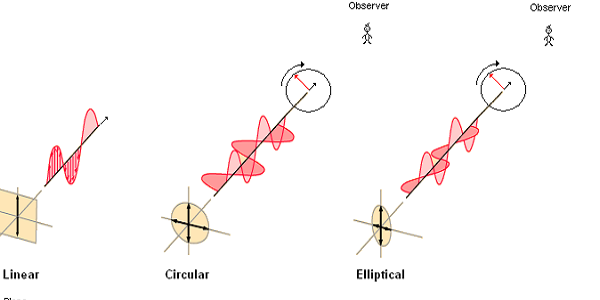Understanding Polarization
Light is an electromagnetic wave, and the electric field of this wave oscillates perpendicularly to the direction of propagation. If the direction of the electric field of light is well defined, it is called polarized light. Depending on how the electric field is oriented, we classify polarized light into Circular and Elliptical Polarized light.
What is Circular Polarization?
If light is composed of two plane waves of equal amplitude but differing in phase by 90°, then the light is said to be circularly polarized. If you could see the tip of the electric field vector, it would appear to be moving in a circle as it approached you. While looking at the source,if the electric vector of the light coming toward you appears to be rotating counter clockwise, the light is said to be right-circularly polarized. If clockwise, then left-circularly polarized light. The electric field vector makes one complete revolution as the light advances one wavelength toward you. Another way of saying it is that if the thumb of your right hand were pointing in the direction of propagation of the light, the electric vector would be rotating in the direction of your fingers.
Circularly polarized light may be produced by passing linearly polarized light through a quarter-wave plate at an angle of 45° to the optic axis of the plate.
What is Elliptical Polarization?
In electrodynamics, elliptical polarization is the polarization of electromagnetic radiation such that the tip of the electric field vector describes an ellipse in any fixed plane intersecting, and normal to, the direction of propagation. An elliptically polarized wave may be resolved into two linearly polarized waves in phase quadrature, with their polarization planes at right angles to each other. Since the electric field can rotate clockwise or counter clockwise as it propagates, elliptically polarized waves exhibit chirality.

